Library Overview
Learn how to use the East Asia Library, which includes Ensembles, Melodic Instruments and Percussion Instruments.
The Spotlight Collection East Asia library is split into three main instrument types:
Ensembles: These contain multiple percussion instruments formed to produce the sound of a full traditional East Asian percussion ensemble. For more information on ensembles, refer to Ensembles.
Melodic: These are solo melodic instruments and include a number of keyswitches for ornaments and authentic patterns. For more information on the solo melodic instruments included, refer to Melodic Instruments.
Percussion: These are solo percussion instruments, mapped in more detail than the ensemble instruments. They contain patterns, fills, rolls, and single hits. For more information on the solo percussion instruments included, refer to Percussion Instruments.
Ensembles
The Ensembles folder contains four percussion instruments formed to produce the authentic sound of full traditional East Asian percussion ensembles.
The ensembles included are:
East Asia Percussion: An ensemble of 16 percussion instruments from China, Japan, and Korea, including the Hua Pen Gu, Okedo-daiko, Tsuri-Daiko, Janggu (Sanjo), Xiao Tanggu, Kakko, Tsuzumi, Sogo, Buk, Bangu, Daluo, Xiaoluo, Naobo, Shoko, Jing, and Kkwaenggwari.
Percussion China: An ensemble of six percussion instruments from China, including the Hua Pen Gu, Xiao Tanggu, Daluo, Xiaoluo, Naobo, and Bangu.
Percussion Japan: An ensemble of five percussion instruments from Japan including the Okedo-daiko, Tsuri-Daiko, Kakko, O-Tsuzumi, and Shōko.
Percussion Korea: An ensemble of five percussion instruments from Korea. This ensemble includes the Janggu (Samul), Buk (Samul), Jing, Kkwaenggwari, Sogo.
Melodic Instruments
The East Asia Library includes a selection of 14 string and wind instruments, from blown flutes and reed instruments to plucked lutes and hammered dulcimers. The melodic instruments come with phrases, traditional scales, and tunings that are customizable, empowering you to create your own unique sound.
The melodic instruments are split into three countries:
Melodic China
The Melodic China folder includes six solo instruments, including the Dizi, Erhu, Guqin, Guzheng, Pipa, and Yangqin.
Dizi
The Dizi is a side-blown bamboo flute with a bright and loud sound. A feature that makes the Dizi unique is the Dimo, a thin membrane of reed tissue that sits taut over an additional hole between the mouth hole and the six finger holes, and produces extra overtones reminiscent of overdrive distortion. The process of applying the membrane to create exactly the right buzz is an art form in itself.
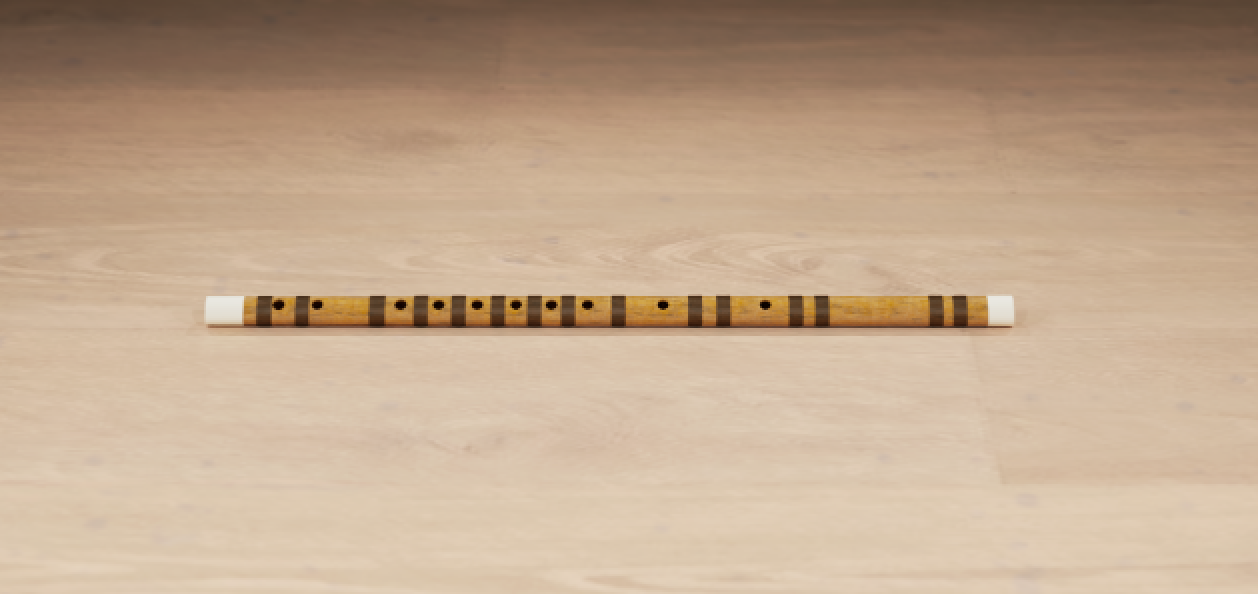
Dizi
Erhu
Known for vibrato and smooth pitch glides, but also brittle and scratchy timbres, the Erhu or "Chinese violin" is an expressive solo instrument that is said to closely resemble the human voice. The Erhu has two steel strings, tuned to D and A, the same as the middle strings of a violin. With varying bowed and plucked playing styles, an Erhu can create anything from screeching to honey-sweet wailing.
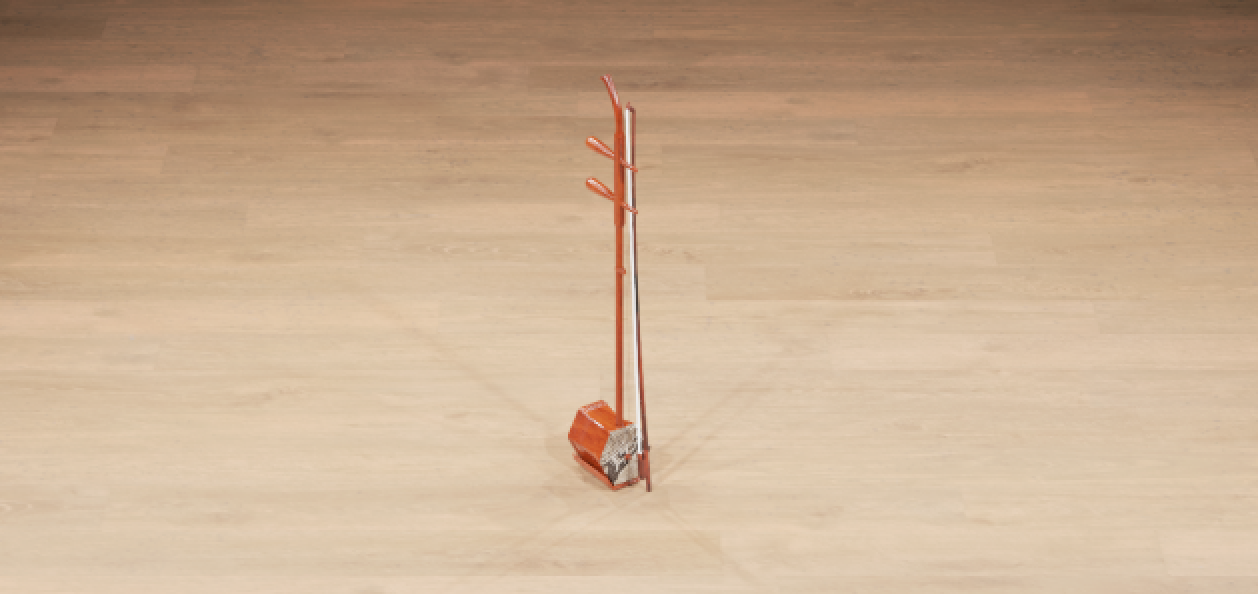
Erhu
Guqin
A plucked box-zither chordophone, the Guqin is more than just a musical instrument, it is a way of life, a philosophy, and a focal point for symbolism. Its length of 3.65 Chinese feet symbolizes the 365 days of a year, and the thirteen soundboard studs stand for the thirteen moons of the year. Up to twenty layers of lacquer are applied to the wooden resonator of a Guqin, to create a uniquely delicate timbre.
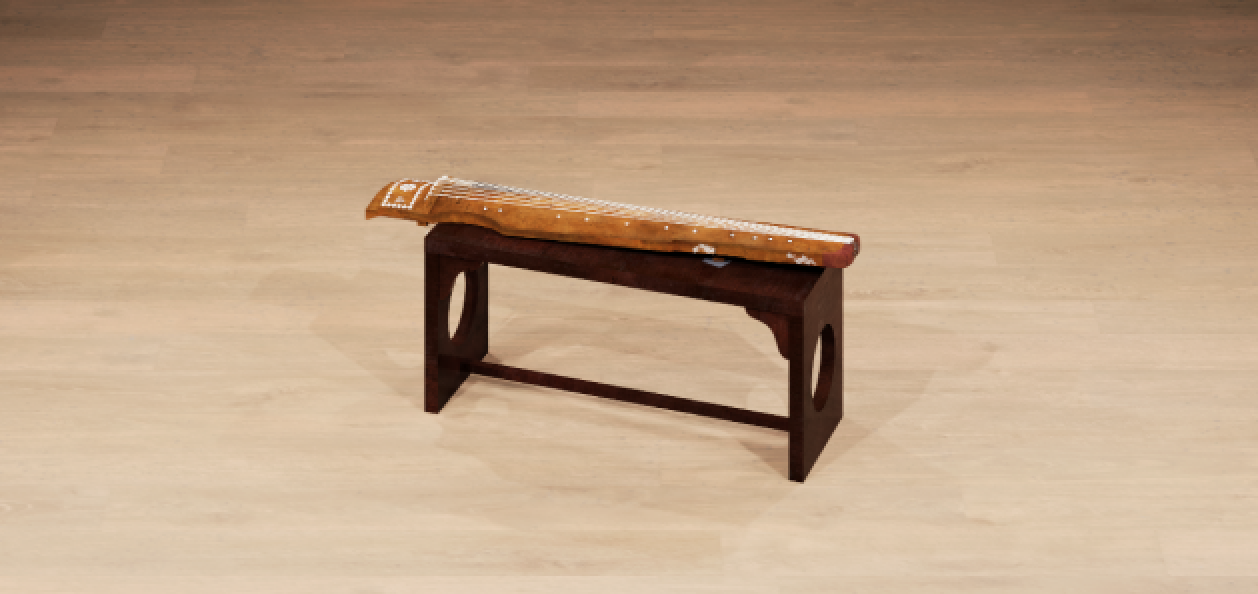
Guqin
Guzheng
Originating around 2500 years ago in Northern China, the Guzheng is the ancestor of many Asian zithers. One of a vast family of hammered dulcimers worldwide, it is tuned to a pentatonic scale, and is the main “harmony" instrument in Chinese music. The strings of a Guzheng are played with two hands, which allows the timbre and pitch of notes to be altered with harmonics, vibrato and muting.
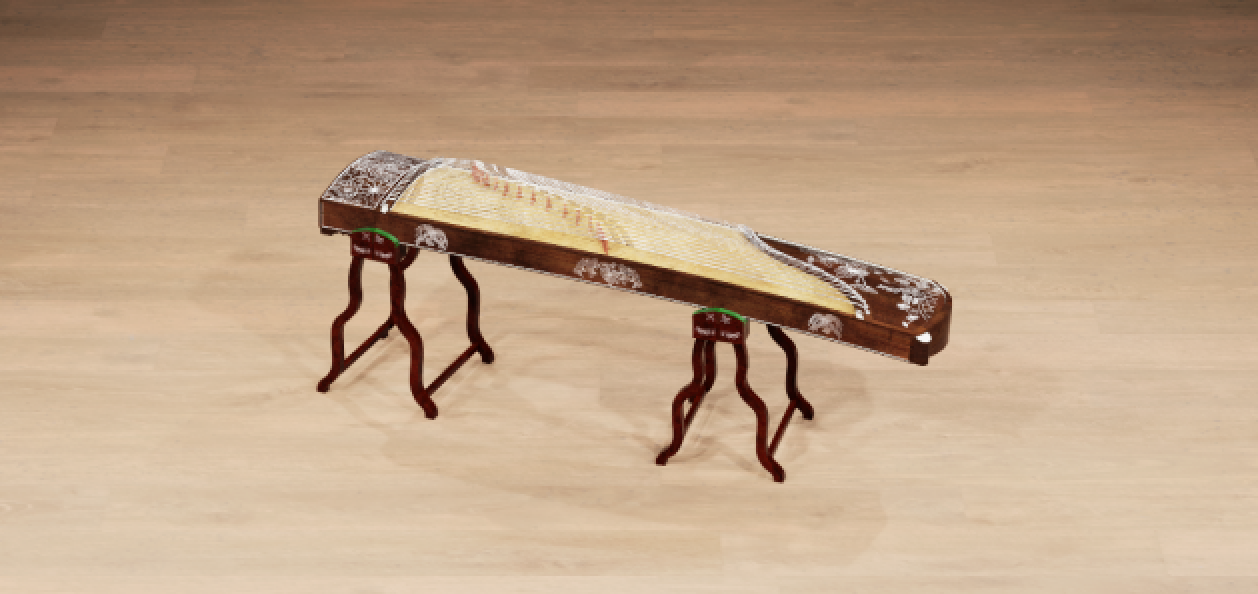
Guzheng
Pipa
A pear-shaped lute with four strings and about 30 frets, the sound of a Pipa is bright and even piercing when played with force, with a strong emphasis on the high mids. There’s huge scope for expressive playing via vibrato, portamento and glissando, or even striking the soundboard and twisting the strings away from the frets for percussive, cymbal-like effects. Unique to the Pipa is its extremely dense tremolo.
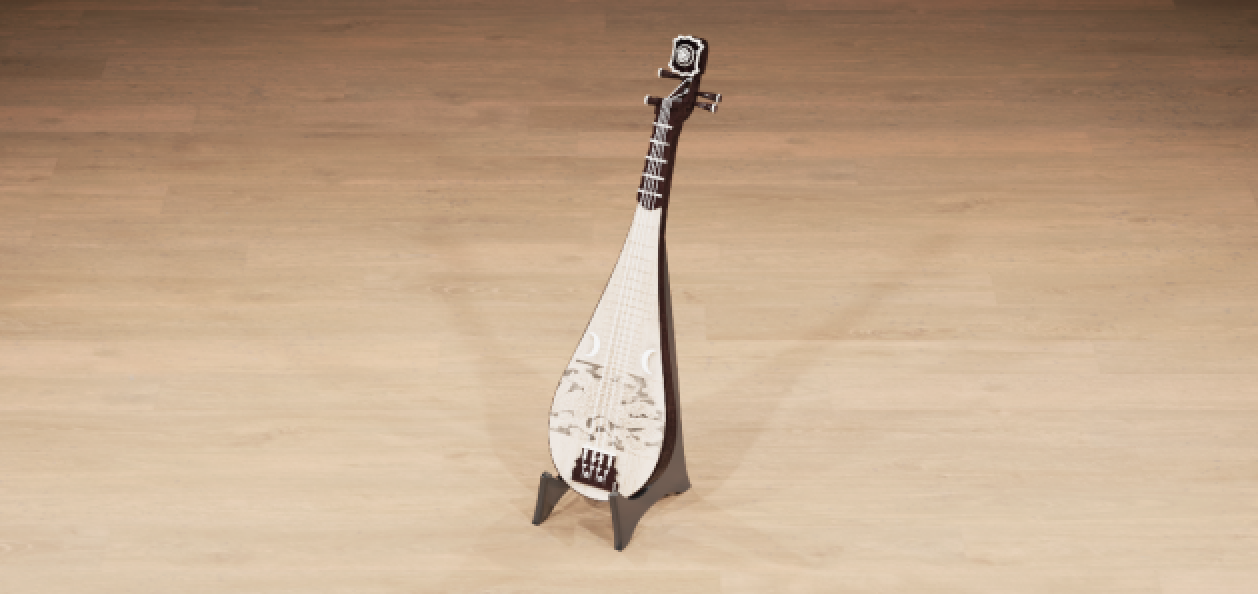
Pipa
Yangqin
Comparable to the piano in Western music, the Yangqin is perfect for crossovers with other music styles. 144 strings are tuned to 48 different pitches, with microtonal deviations between strings of the same pitch resulting in a natural chorus effect that gives the Yangqin an airy, light quality. The beaters used to hit the strings are made from elastic bamboo, and can create exceptionally fast tremolos.
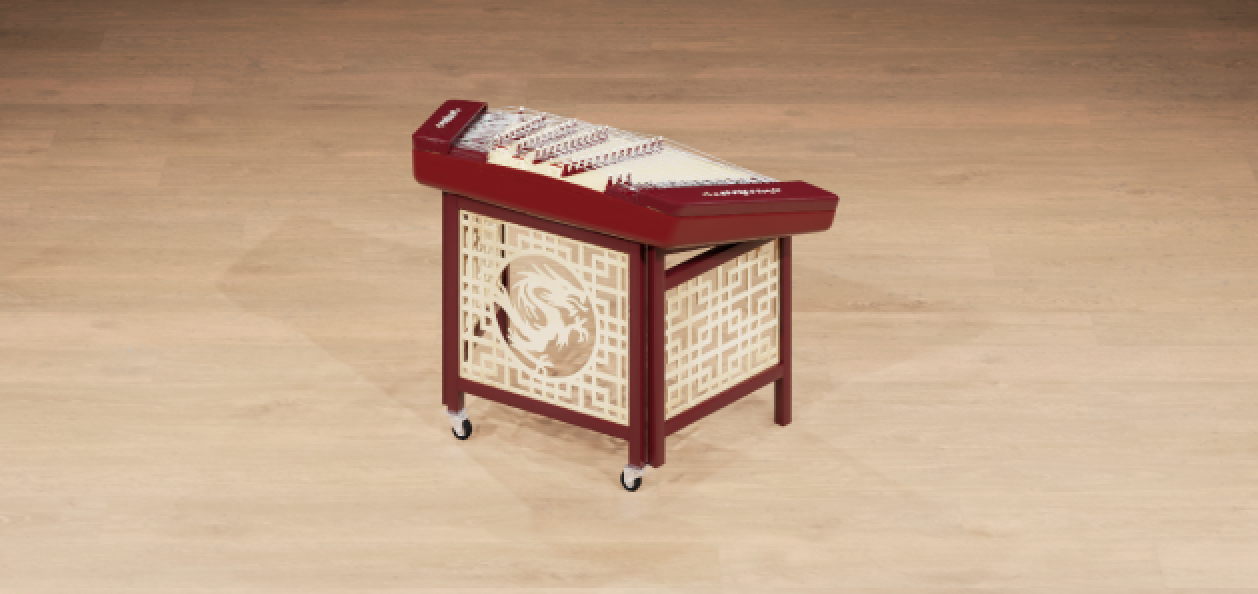
Yangqin
Melodic Japan
The Melodic Japan folder includes five solo instruments, including the Hichiriki, Koto, Shakuhachi, Shamisen, and Shō.
Hichiriki
Known also as the Japanese oboe, the Hichiriki is a sacred instrument. A double-reed wind instrument with a cylindrical bore, its sound is clear, bright, and penetrating. Although not even 20 cm long, the Hichiriki is loud and has a heart-stirring sound that is said to have the power to cleanse. The instrument’s distinctive pitch-gliding technique is called “Enbai”, which means "salted plum”.
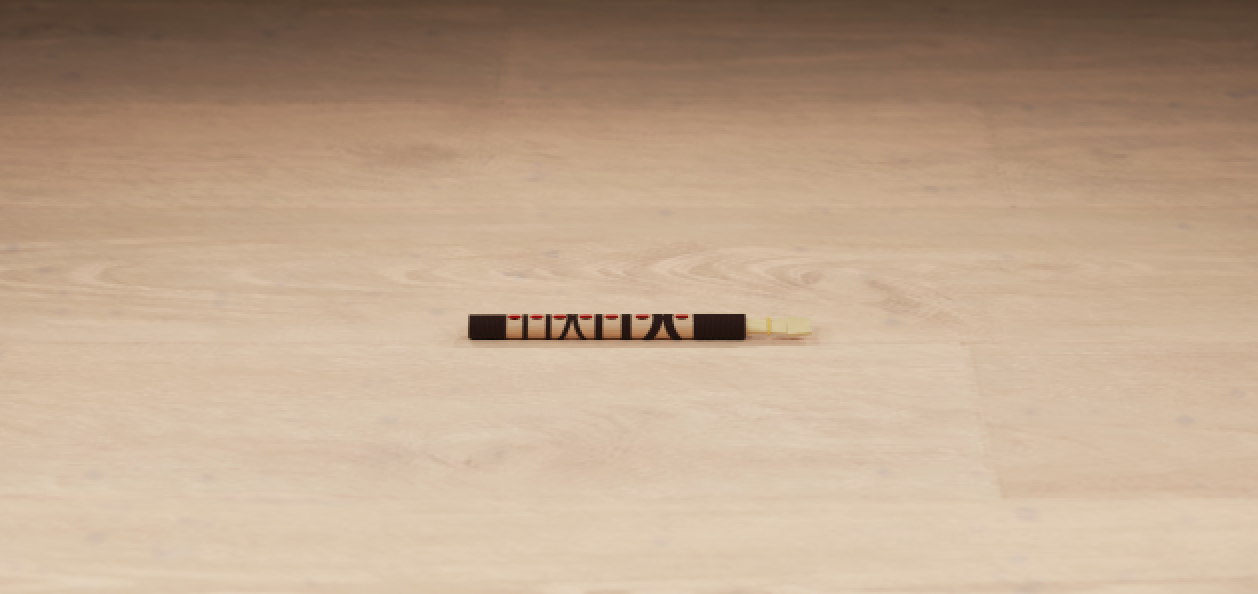
Hichiriki
Koto
The Koto, a plucked zither. The instrument can be tuned by setting the moveable bridges to the desired pitch. Played kneeling, various techniques characterize the sound of a Koto, including tremolo, plucked chords, excessive vibrato, and downward glissando.
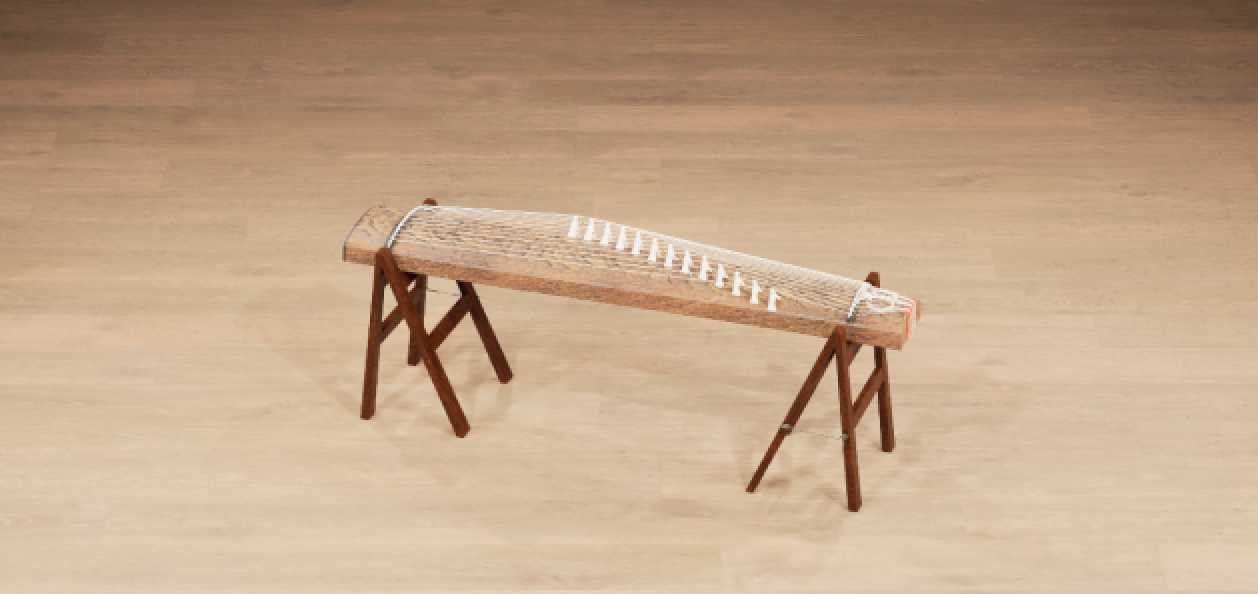
Koto
Shakuhachi
The Shakuhachi is an end-blown bamboo flute. With a broad variety of playing techniques, the sound of the Shakuhachi is extremely malleable and expressive. By only partly covering holes and over-blowing the instrument, experienced players can produce a range of more than three octaves. The Shakuhachi has also been a staple sound of Japanese-made synthesizers since the 1980s.
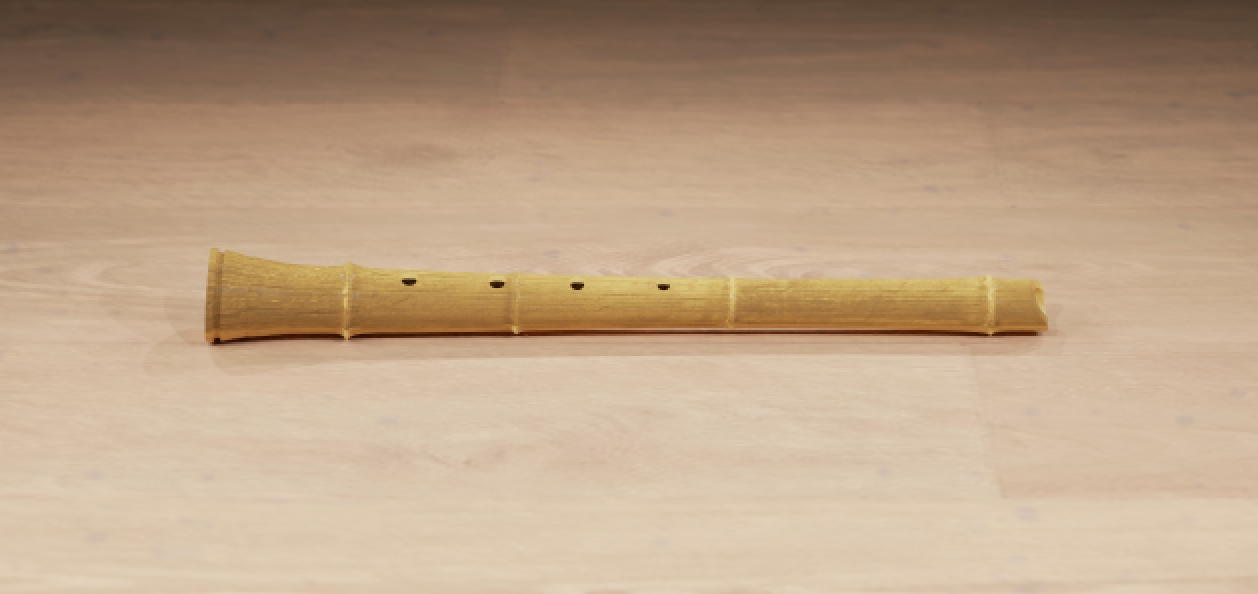
Shakuhachi
Shamisen
The Shamisen is a long-necked, lute-type instrument with a sharp, percussive sound. Shamisen players often wear bands of cloth on their fingers to facilitate sliding up and down its neck. The instrument allows for a huge range of expressive playing styles, from gentle vibrato to precipitous slides. In recent years, the Shamisen has gained popularity through the rock-influenced playing style of young performers.
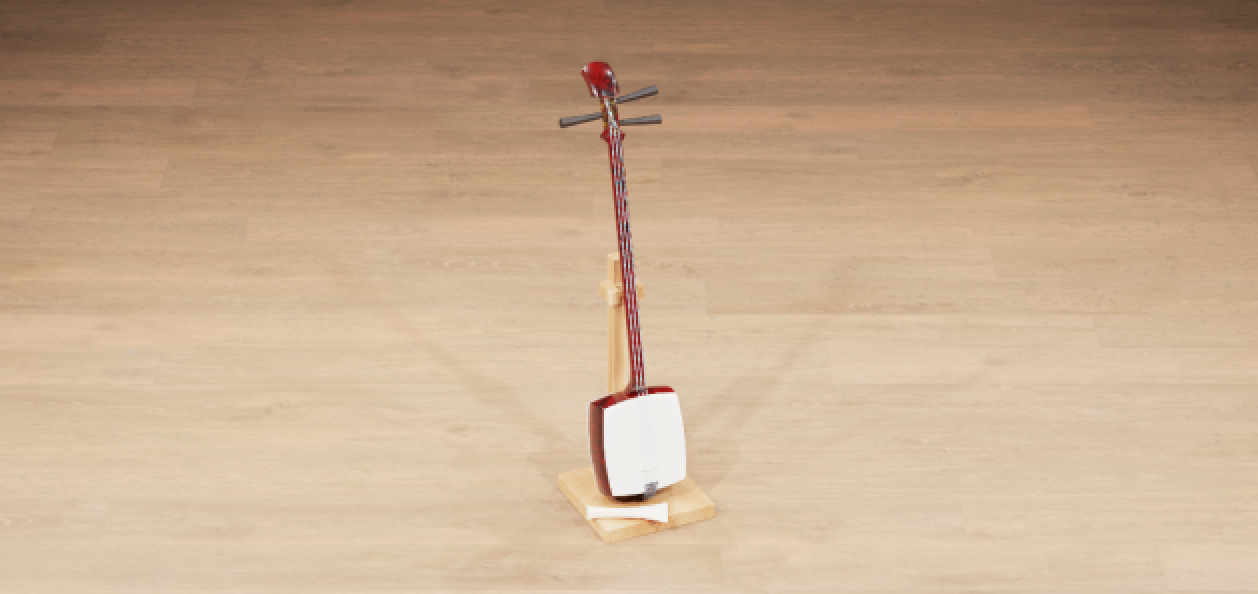
Shamisen
Shō
The Shō is an aerophone made from bamboo pipes. Its sound is said to resemble the cry of the mythological bird Phoenix, a symbol of virtue and grace in Asian mythology. Two of the 17 pipes of a Shō are silent, as they are simply meant to complete an image of folded wings. As with an accordion or mouth harp, the Shō can be played by either exhaling or inhaling while covering specific finger holes on the bamboo pipes.
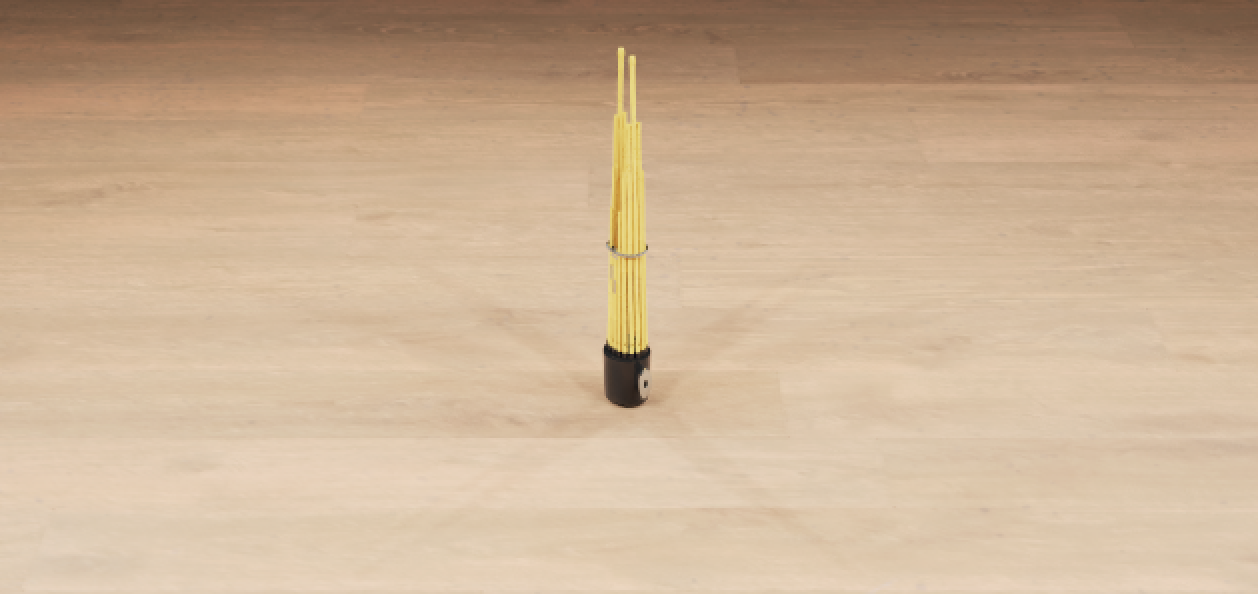
Shō
Melodic Korea
The Melodic Korea folder includes three solo instruments, including the Ajaeng, Daegeum, and Gayageum.
Ajaeng
Dubbed the ‘Scratch Zither’, the Ajaeng is not plucked, but bowed. It produces sustained notes, unlike any other zither. The height of the instrument’s movable bridges give leeway for the pitch of a note to be altered by pressing down on the strings, allowing a vibrato that deviates from its center note by a minor third or more, which creates a characteristically undulating tone.
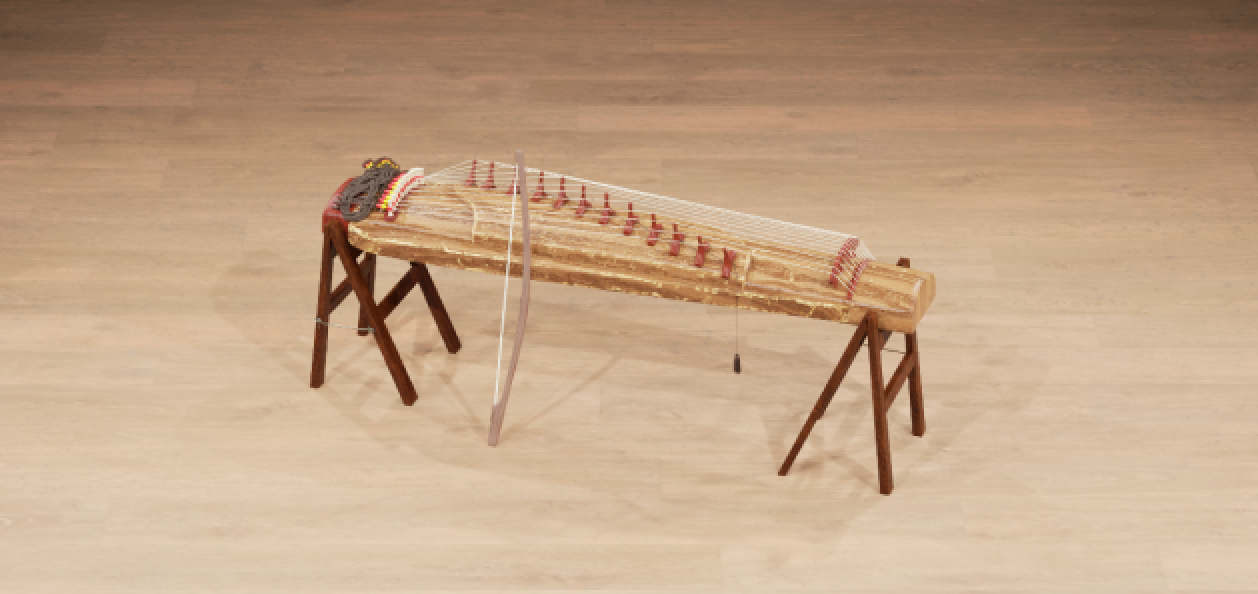
Ajaeng
Daegeum
The Daegeum is a side-blown flute known for vibrato and pitch bends, whose depth of tone and wide range of expression make it a frequent choice for dramatic film scoring. Like the Chinese Dizi, it features a membrane made from a thin reed film, which creates a characteristic buzzing tone. The Daegeum covers three octaves, ranging from breathy and soft in the lower registers to loud and piercing at the top.
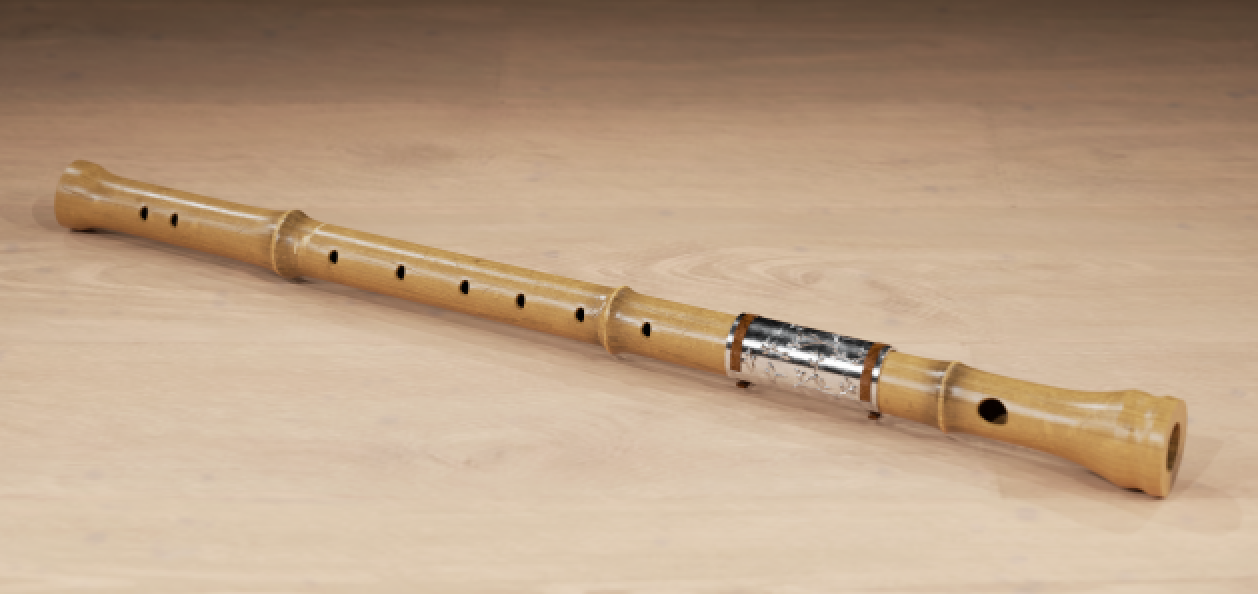
Daegeum
Gayageum
Considered to be the Korean national instrument, the Gayageum is a plucked zither made from paulownia wood, with 12 strings and moveable bridges. This complex instrument delivers a deep and resonant tone in a way that is delicate and subtle. The instrument’s varied playing techniques with left and right hand allow for pitch bending, harmonics, vibrato, glissando, tremolo and even echo effects.
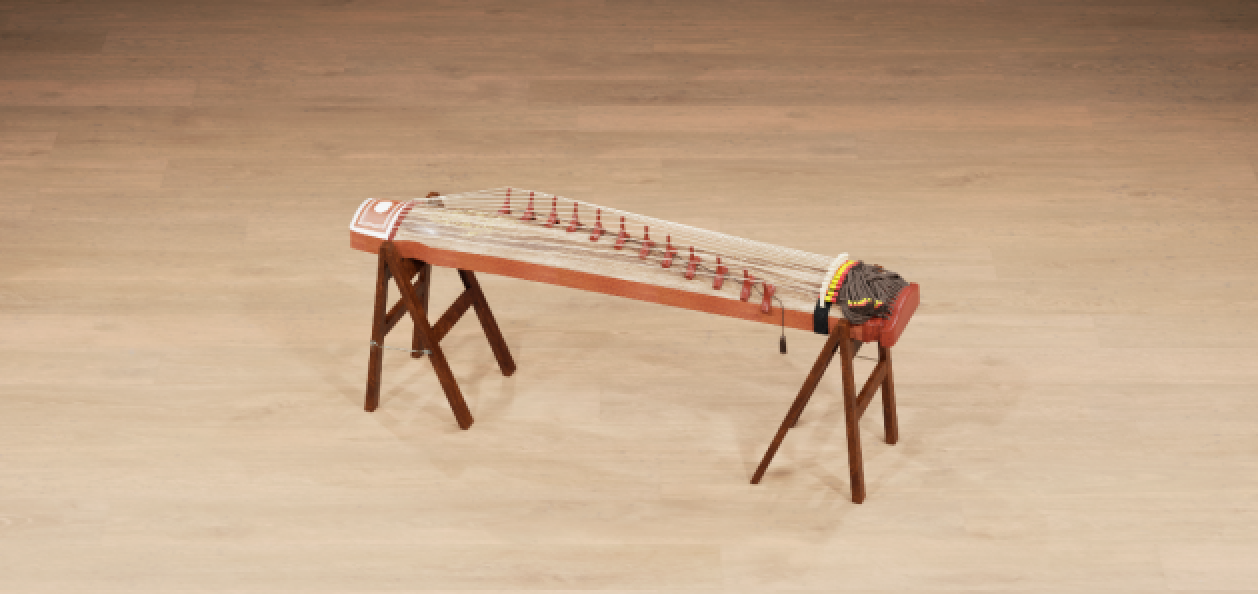
Gayageum
Percussion Instruments
East Asia gives you an extensive range of instantly recognizable sounds including drums, gongs, cymbals, and woodblocks. Choose from 24 percussion instruments that can be free-played individually or as part of bespoke ensembles. Each instrument and ensemble comes with an array of preset grooves which can be further tweaked with intuitive macro controls.
The percussion instruments are split into three countries:
Percussion China
The Percussion China folder includes eight solo instruments, including the Bangu, Bangzi, Dabo, Daluo, Hua Pen Gu, Naobo, Xiao Tanggu, and Xiaoluo.
Bangu
The Bangu is a combination of two instruments — the Ban and the Danpigu. Ban are clappers consisting of rectangular blocks made from bamboo or hardwood, which are tied together by a silk cord. The Danpigu is a drum with a frame made of thick wedges of hardwood glued together to form a circle, and wrapped with a metal band. Bangzi are high-pitched Chinese woodblocks, with a characteristically dry, percussive sound.
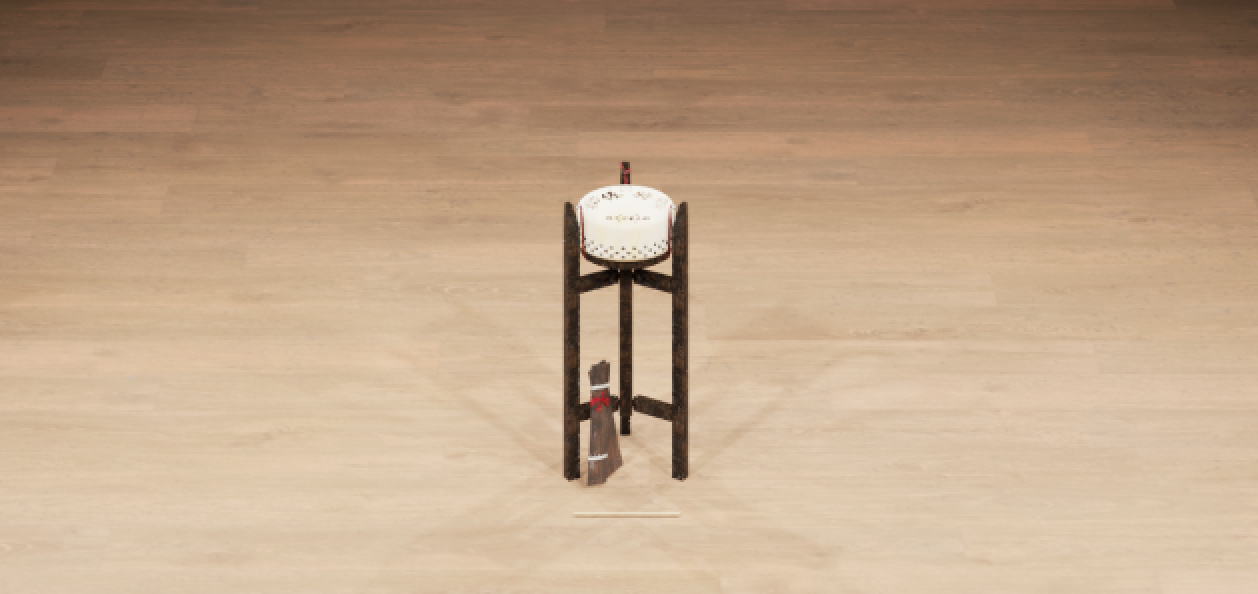
The Bangu
Bangzi
The Bangu is a combination of two instruments — the Ban and the Danpigu. Ban are clappers consisting of rectangular blocks made from bamboo or hardwood, which are tied together by a silk cord. The Danpigu is a drum with a frame made of thick wedges of hardwood glued together to form a circle, and wrapped with a metal band. Bangzi are high-pitched Chinese woodblocks, with a characteristically dry, percussive sound.
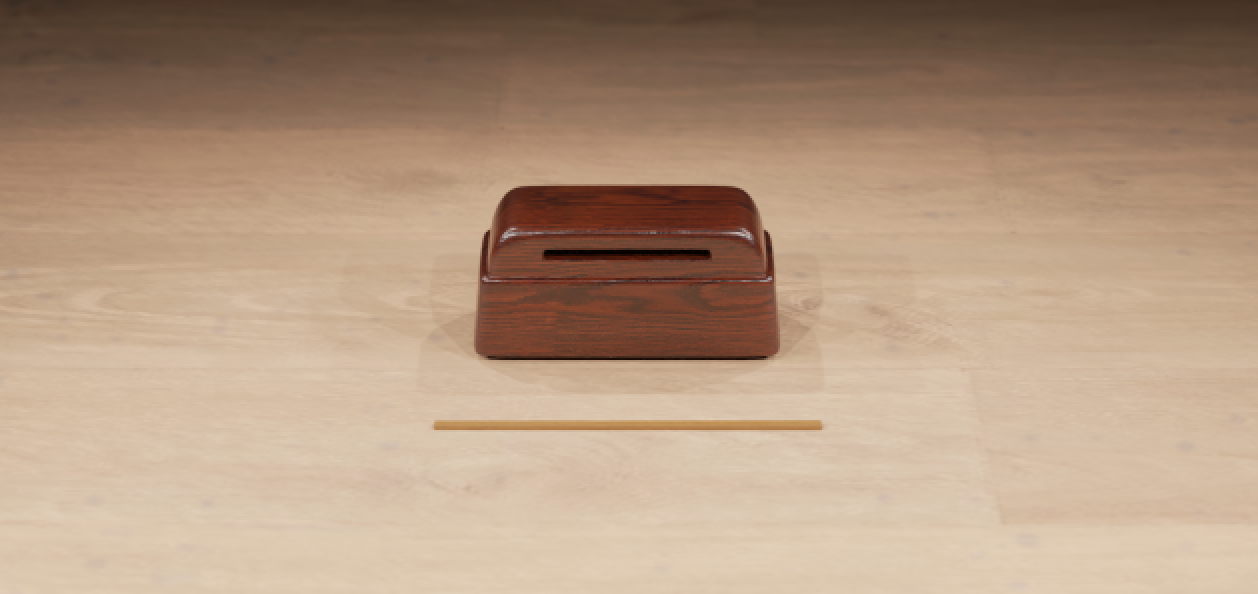
Bangzi
Dabo
Naobo are medium-sized cymbals with a thin, flat rim and a slight upturn at the edge, while Dabo are of similar build but bigger. Both are held at the back with a cloth or rope, and clashed against each other with both hands. The dynamic range is wide, and when hit hard they are capable of evoking soul-stirring sounds. They can also be muted after a strike by pressing the rims against the player’s body.
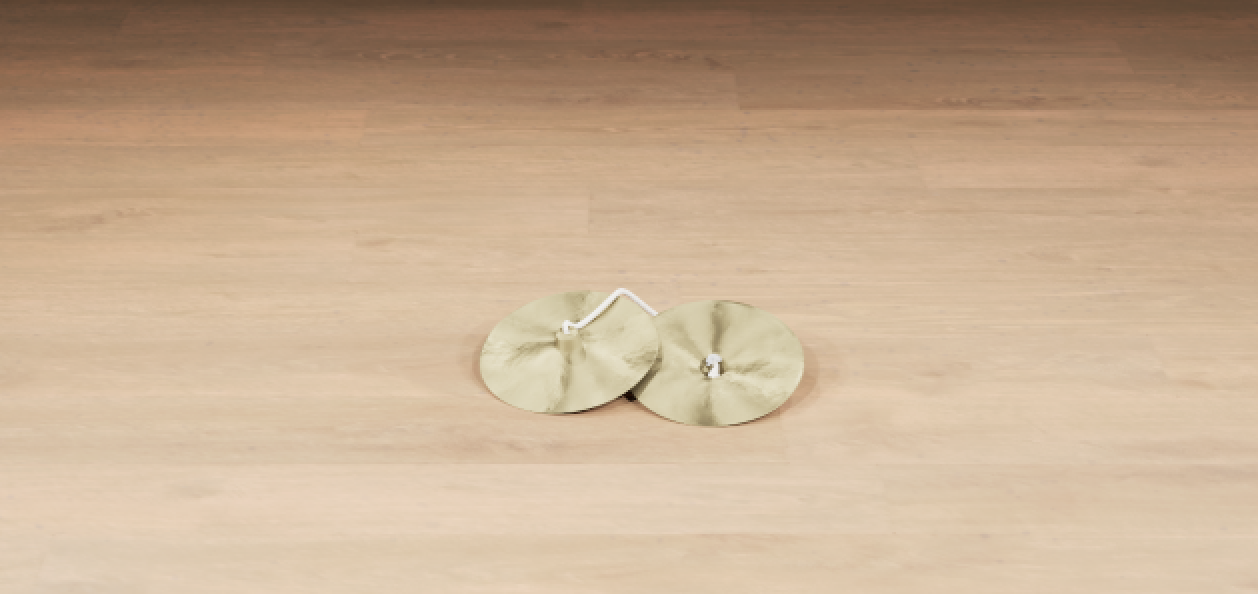
Dado
Daluo
Luo is the generic term for a gong. Daluo (large gong with falling pitch) is larger in comparison to its counterpart Xiaoluo (small gong with rising pitch). Ceremonial, majestic instruments, Gongs have great significance in Chinese percussion, and can be traced back to the 6th century. Usually made of bronze and with a plate-like shape, gongs are struck in the center with a mallet padded with felt or leather.
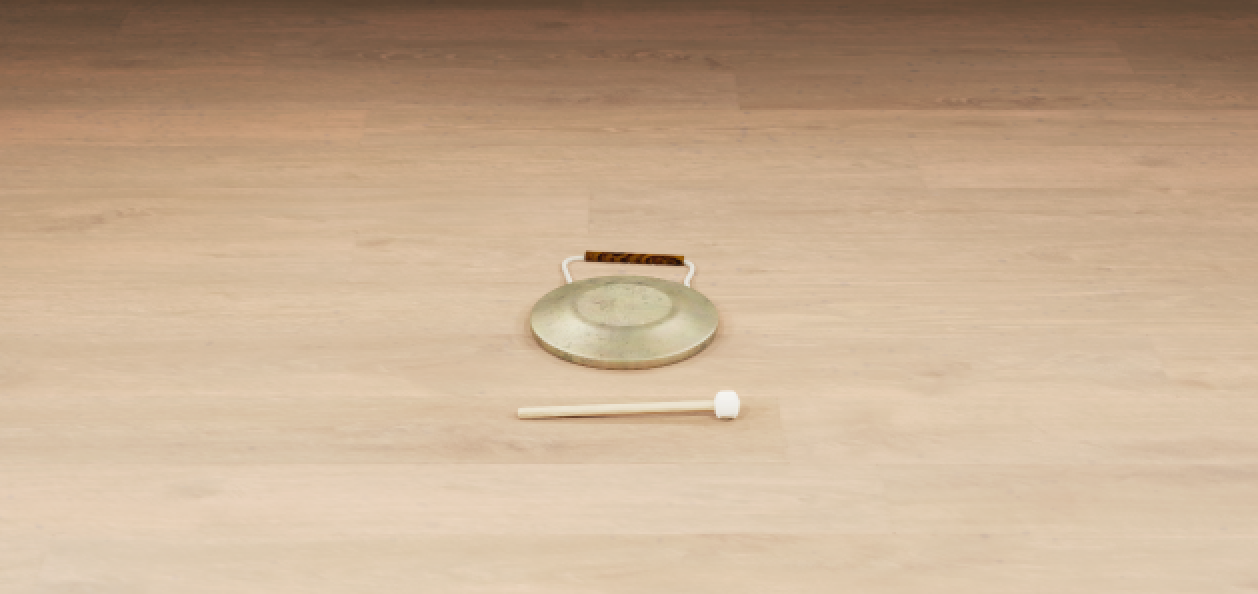
Daluo
Hua Pen Gu
Hua Pen Gu and Xiao Tanggu are heavy, barrel-shaped drums with a head made from animal hide on both sides. The larger Hua Pen Gu is strong and expressive, with two basic sounds, low when hit in the middle of the drum head, and mid when hit on the wooden shell or rim of the drum head. The smaller Xiao Tanggu produces solid midrange sounds, and can be played with small cymbals and gongs to create a festive atmosphere with fast rhythms.
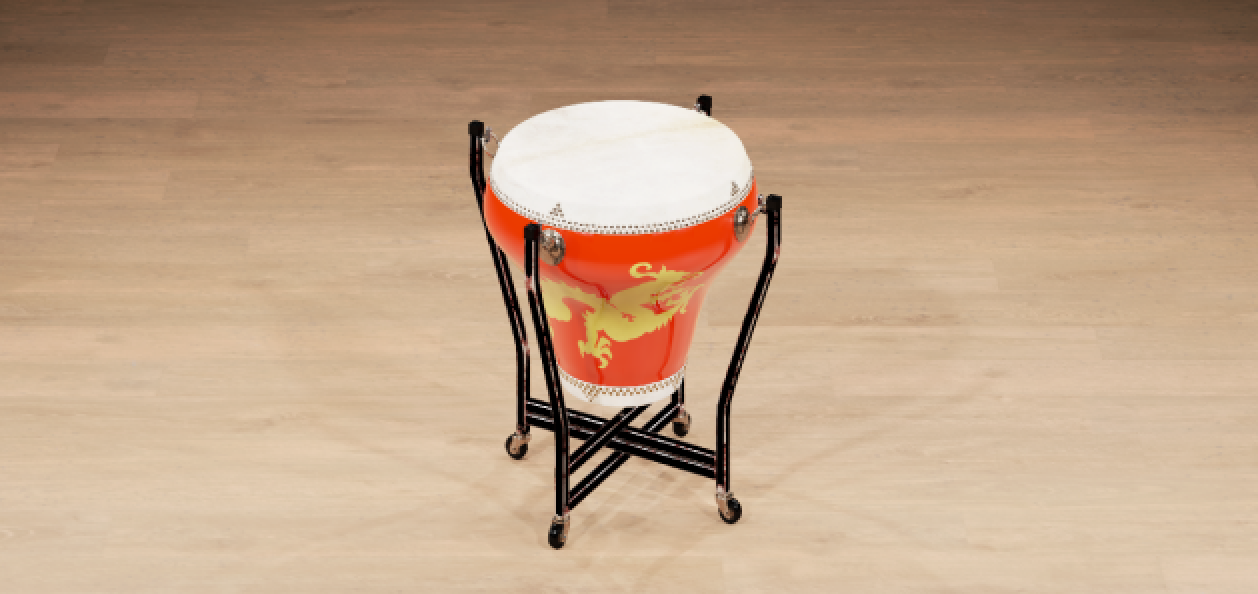
Hua Pen Gu
Naobo
Naobo are medium-sized cymbals with a thin, flat rim and a slight upturn at the edge, while Dabo are of similar build but bigger. Both are held at the back with a cloth or rope, and clashed against each other with both hands. The dynamic range is wide, and when hit hard they are capable of evoking soul-stirring sounds. They can also be muted after a strike by pressing the rims against the player’s body.
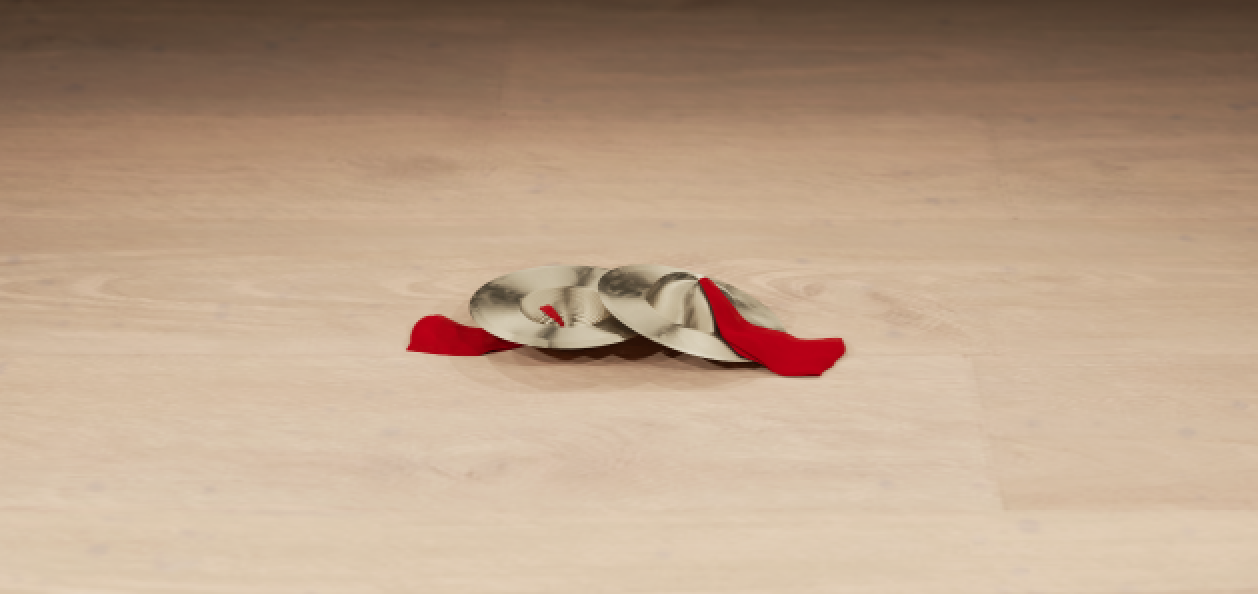
Naobo
Xiao Tanggu
Hua Pen Gu and Xiao Tanggu are heavy, barrel-shaped drums with a head made from animal hide on both sides. The larger Dagu is strong and expressive, with two basic sounds — low when hit in the middle of the drum head, and mid when hit on the wooden shell or rim of the drum head. The smaller Xiao Tanggu produces solid midrange sounds, and can be played with small cymbals and gongs to create a festive atmosphere with fast rhythms.
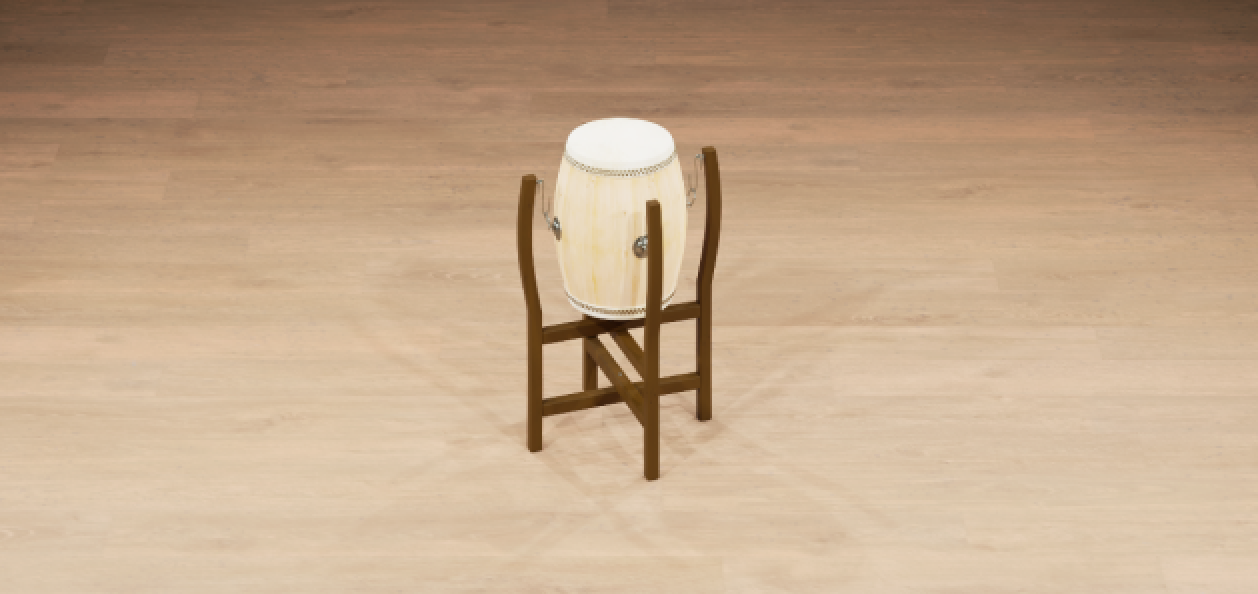
Xiao Tanggu
Xiaoluo
Luo is the generic term for a gong. Daluo (large gong with falling pitch) is larger in comparison to its counterpart Xiaoluo (small gong with rising pitch). Ceremonial, majestic instruments, Gongs have great significance in Chinese percussion, and can be traced back to the 6th century. Usually made of bronze and with a plate-like shape, gongs are struck in the center with a mallet padded with felt or leather.
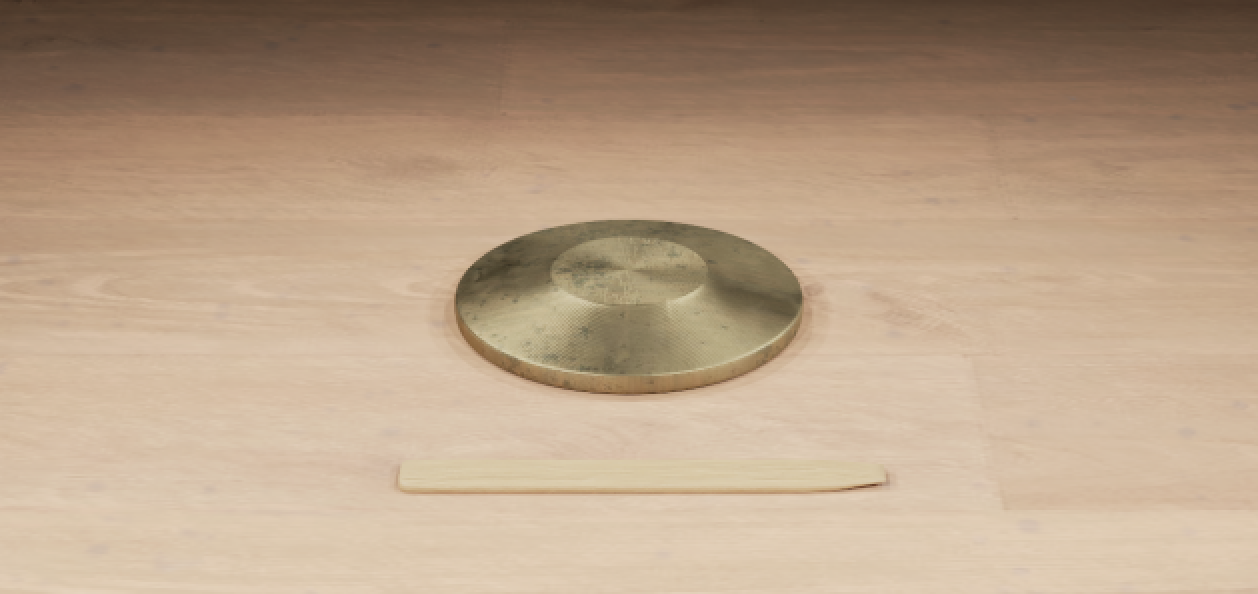
Xiaoluo
Percussion Japan
The Percussion Japan folder includes nine solo instruments, including the Kakko, Kane, Ko-Tsuzumi, Miya-daiko, O-Tsuzumi, Okedo-daiko, Shime-daiko, Shōko, and Tsuri-Daiko.
Kakko
Kakko is a small cylindrical drum, with two oversized hoop drum heads that are laced onto a wooden body and made taut. The body of the Kakko is under 30 cm long, with a diameter of about 15 cm. It is relatively high-pitched, with a sound somewhat reminiscent of a woodblock or clapper. The drum sits on a wooden stand in front of a kneeling performer, and is struck on both sides with two hard, thin, mallet-like sticks.
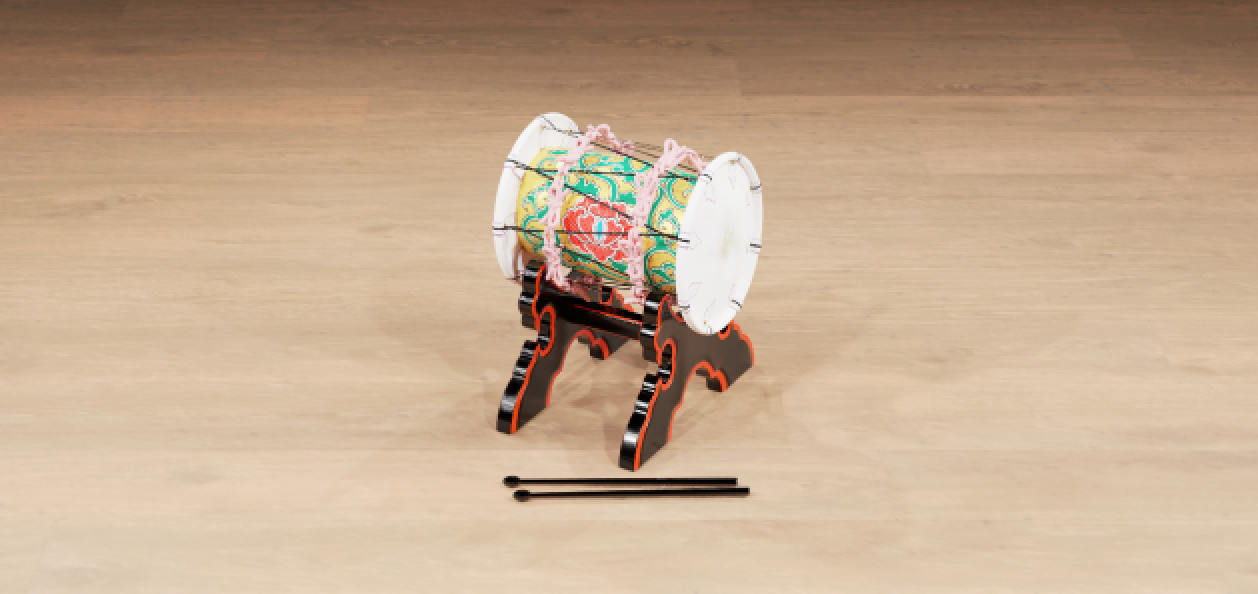
The Kakko
Kane
The Kane is a small, saucer-shaped gong or bell played with a special double-headed mallet that is often made from horn. Although sometimes suspended from a bar, it is more commonly held with one hand and beaten by the other. They can be played in Buddhist or Shinto ceremonies, and the purpose of their use is often to signify time or alert people to certain events.
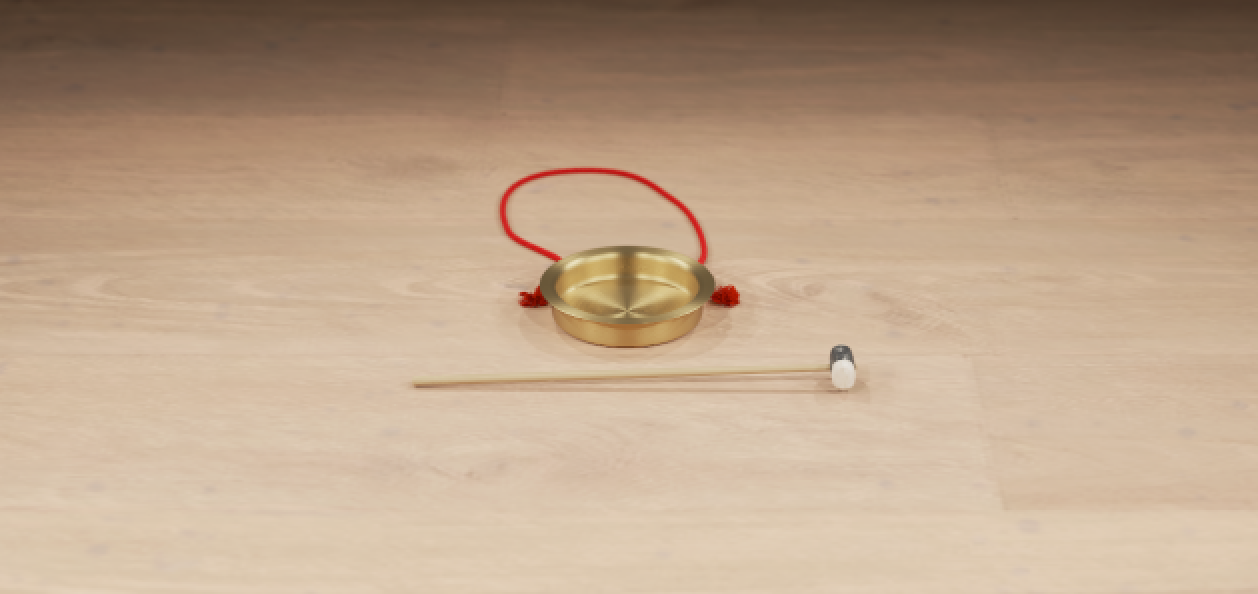
The Kane
Ko-Tsuzumi
Double-headed, laced drums with an hourglass-shaped body, Tsuzumi are high-pitched and sharp. The drum is struck with one hand, while the other hand squeezes or releases the cords to increase or decrease the tension of the heads, allowing the player to raise or lower the pitch. There are two types of Tsuzumi, the smaller Ko-Tsuzumi, which is lower in pitch, and the bigger and higher-pitched O-Tsuzumi.
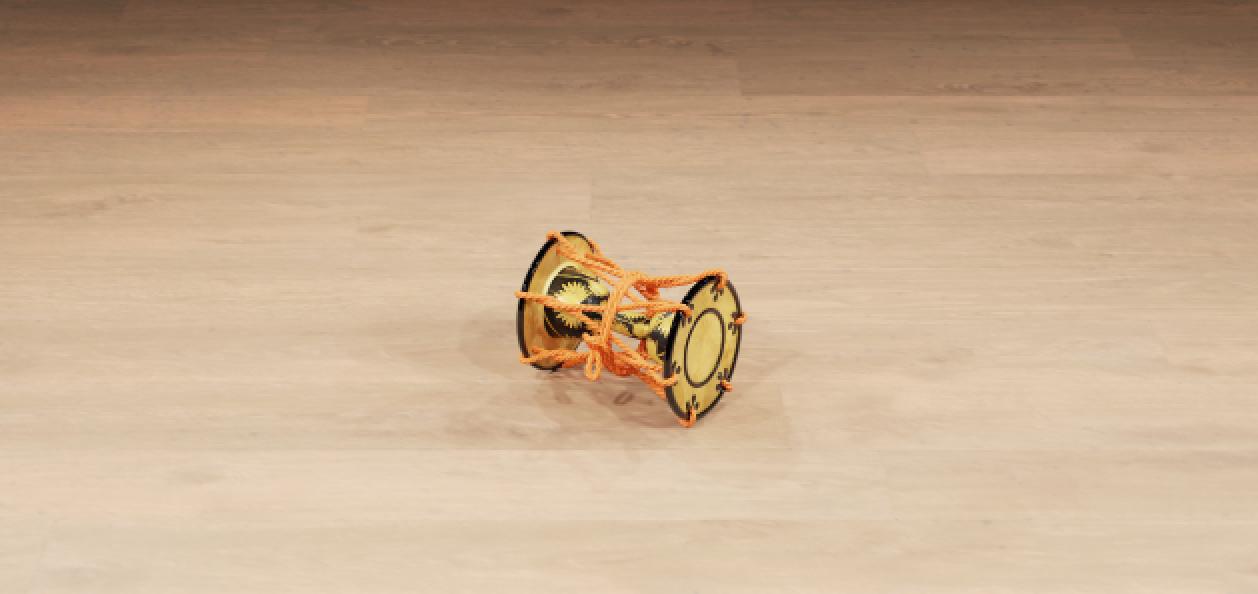
The Ko-tszumi
Miya-daiko
The Miya-Daiko is a robust, wine-barrel-shaped drum with tacked heads, and a loud booming sound. Made of one big piece of wood, they are between 50 to 100 cm in diameter and have a body length equal to, or longer than the diameter. Miya-Daiko can be played flat on the floor, or on a stand in either a horizontal or diagonal position. They are played with two thick wooden sticks called Bachi.
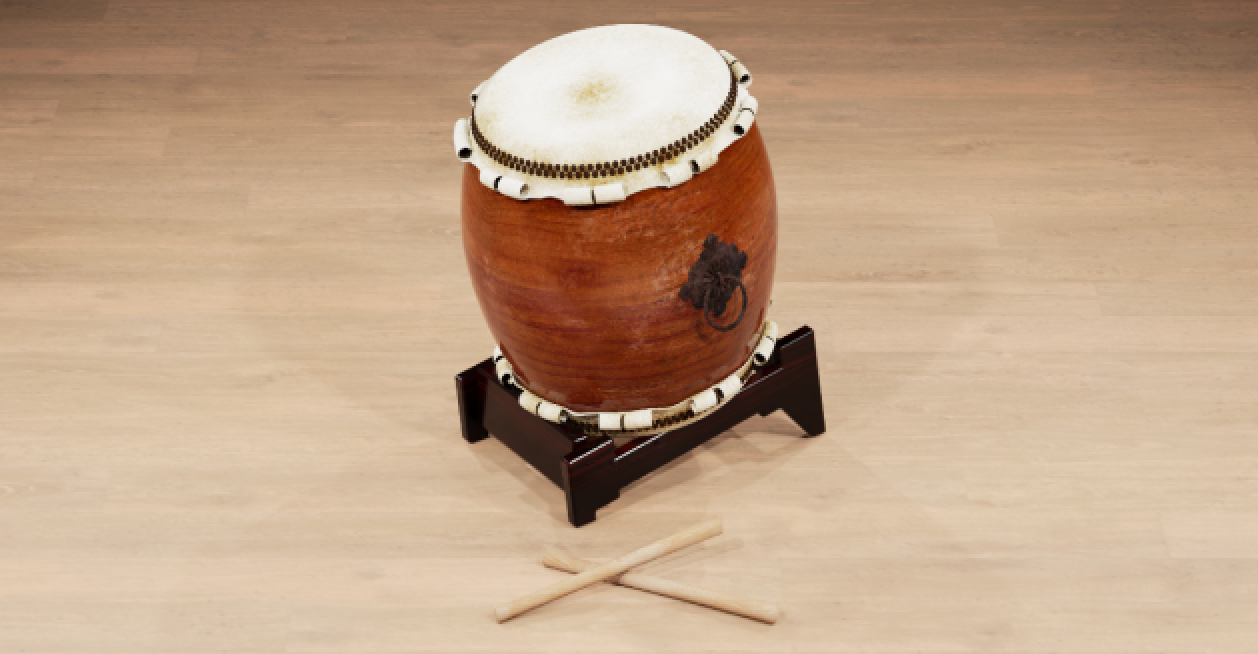
The Miya-Daiko
O-Tsuzumi
Double-headed, laced drums with an hourglass-shaped body, Tsuzumi are high-pitched and sharp. The drum is struck with one hand, while the other hand squeezes or releases the cords to increase or decrease the tension of the heads, allowing the player to raise or lower the pitch. There are two types of Tsuzumi, the smaller Ko-Tsuzumi, which is lower in pitch, and the bigger and higher-pitched O-Tsuzumi.
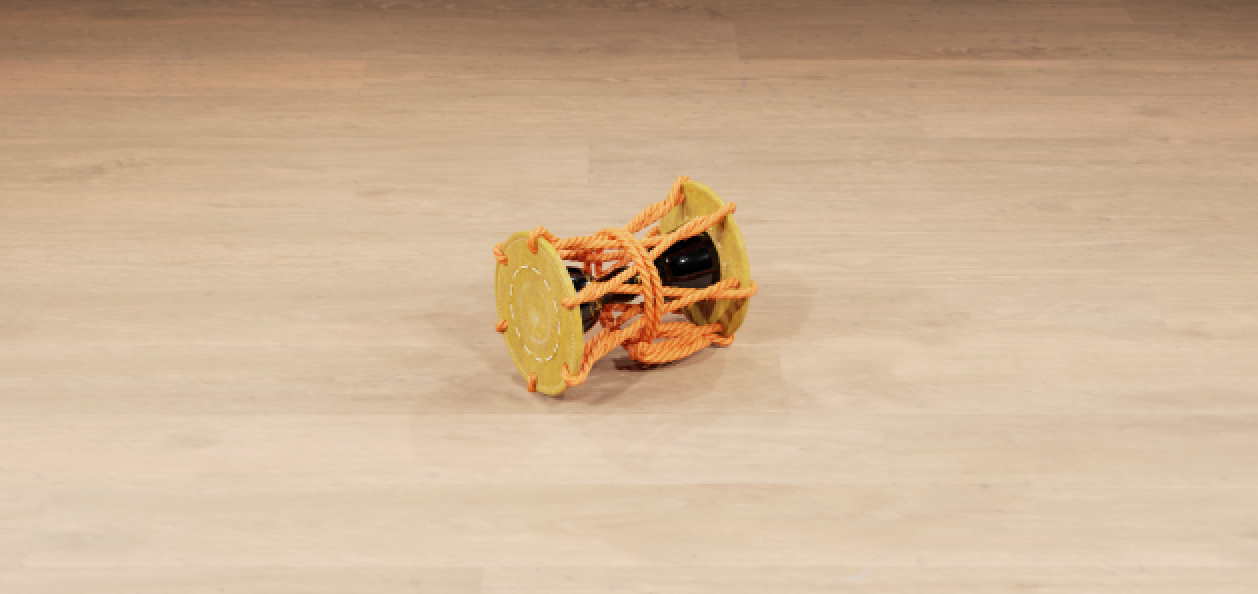
O-Tsuzumi
Okedo-daiko
Okedo-Daiko are bucket-shaped, lace-headed drums of various sizes. The biggest Okedo-daiko in Japan is 380 cm in diameter, but they are all lightweight enough to be hung on a shoulder strap to accommodate dancing and movement on stage while playing. Unlike most drums, which are made from one piece of wood, Okedo-Daiko are put together from vertically oriented blocks that are beveled and glued to create a cylinder.

Okedo-Daiko
Shime-daiko
The Shime-Daiko is a shallow-bodied drum, with a relatively high-pitched sound. Although they are made with two heads, Shime-Daiko are played only on one side. Usually, they are suspended on slightly tilted stands with performers either sitting or standing. Like a snare drum, the Shime-Daiko is capable of cutting through other drums in an ensemble, and is often used to maintain the beat.

The Shime-Daiko
Shōko
The Shōko is a small bronze gong, around 15 cm in diameter suspended from a richly ornamented vertical frame. It is struck with two round-headed mallets, traditionally made from wood or stone, either with a single or a double stroke. In both cases, the mallets remain on the gong, which immediately mutes the sound. The Shōko has been used in Buddhist temples in Japan since ancient times.
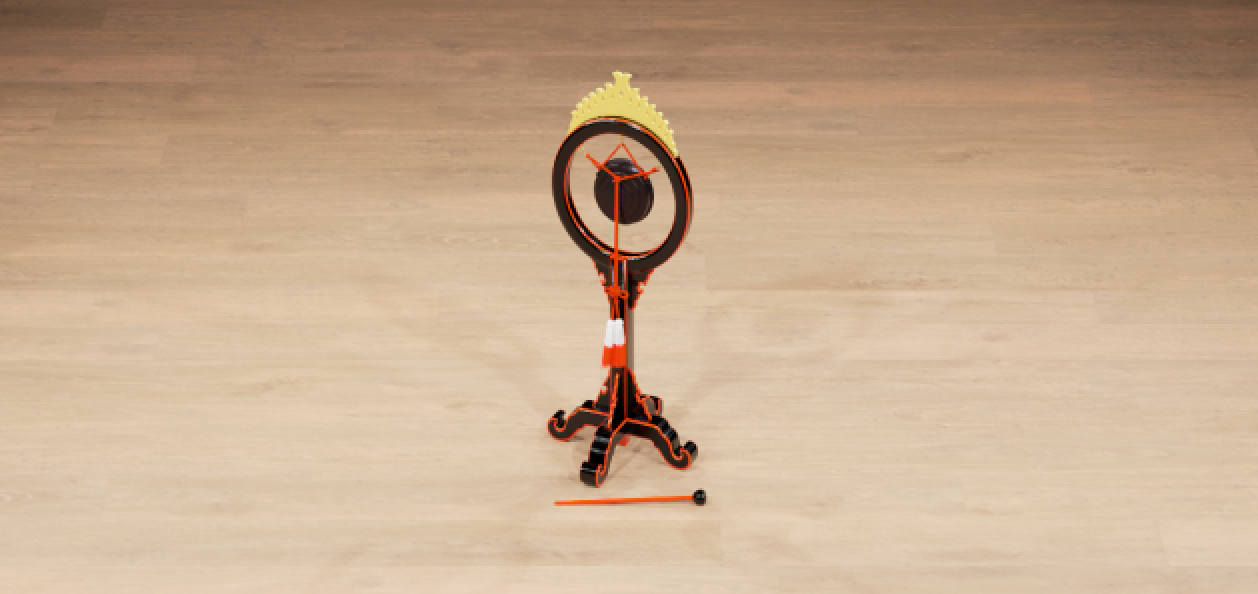
The Shōko
Tsuri-Daiko
The sound of the Tsuri-Daiko often forms the central beat of an entire orchestra. It is hung in an elaborate circular frame and played with two thick mallets on one side only. The Tsuri-Daiko is played with two types of strokes. The “Mebachi” is a soft stroke with the left hand just below the drumhead's center, and the “Obachi” is a loud attack of the right hand to the drumhead's center.

The Tsuri-Daiko
Percussion Korea
The Percussion Korea folder includes seven solo instruments, including the Buk (Samul), Buk (Sori), Janggu (Samul), Janggu (Sanjo), Jing, Kkwaenggwari, and Sogo.
Buk (Samul)
The Buk is a low-pitched, double-headed shallow barrel drum that is taut with animal hide. The Samul-buk has laced heads, and is played by striking it with a single stick on only one of its heads. The left side is played with the bare left hand, and a birchwood stick in the right hand strikes either the drumhead or the wood of the body.
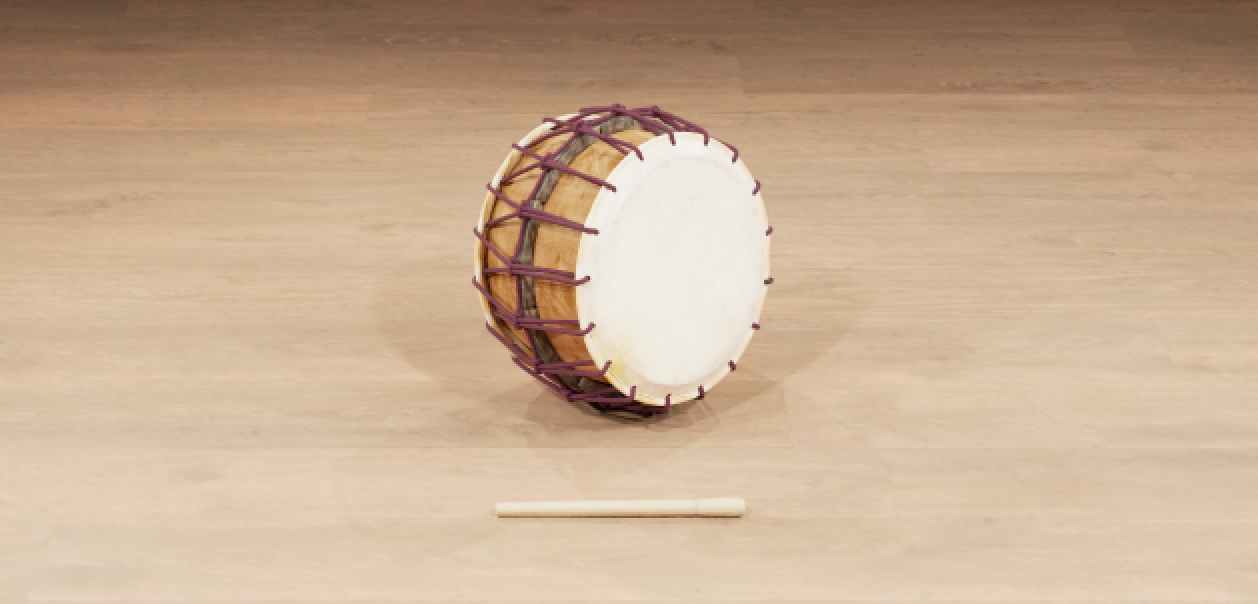
The Samul-buk
Buk (Sori)
The Buk is a low-pitched, double-headed shallow barrel drum that is taut with animal hide. The heads on the Sori-buk are nailed to the body of the drum. The left side is played with the bare left hand, and a birchwood stick in the right hand strikes either the drumhead or the wood of the body.
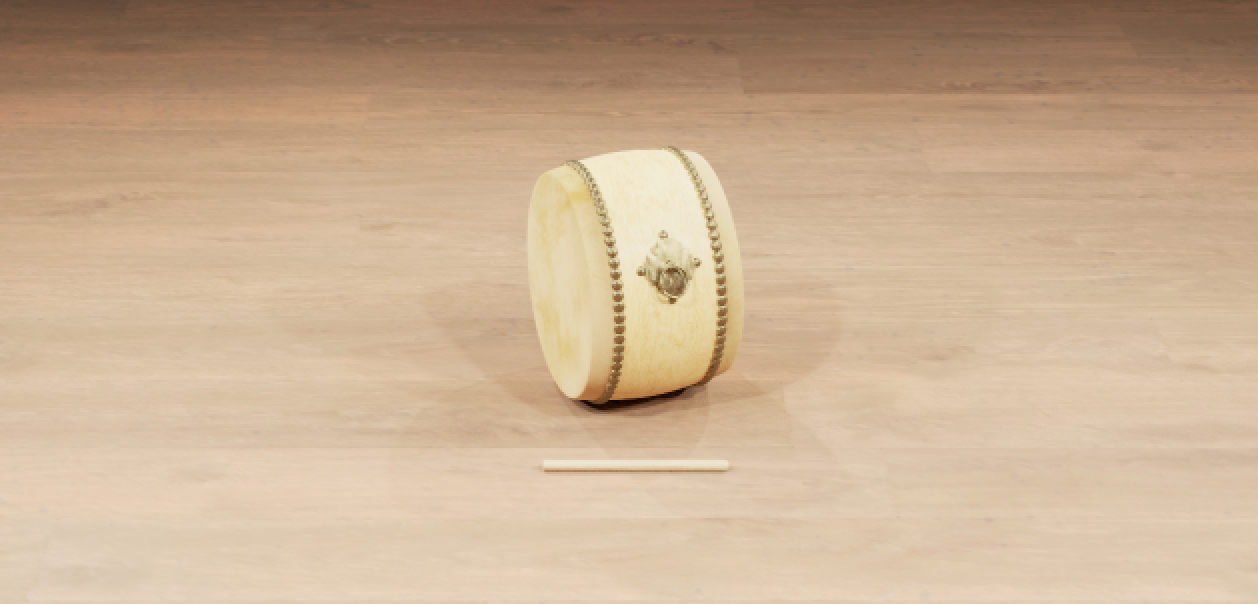
The Sori-buk
Janggu (Samul)
The Janggu is an hourglass-shaped drum with two heads made from animal skin. They can be played on the floor, or carried with a strap on the shoulder while dancing. The tube that connects the left and right sides determines the tone. A wider tube will sound deep and husky while a narrow one will sound hard and snappy. The Sanjo Janggu has a very rich sound, while the smaller Samul Janggu produces a louder sound.
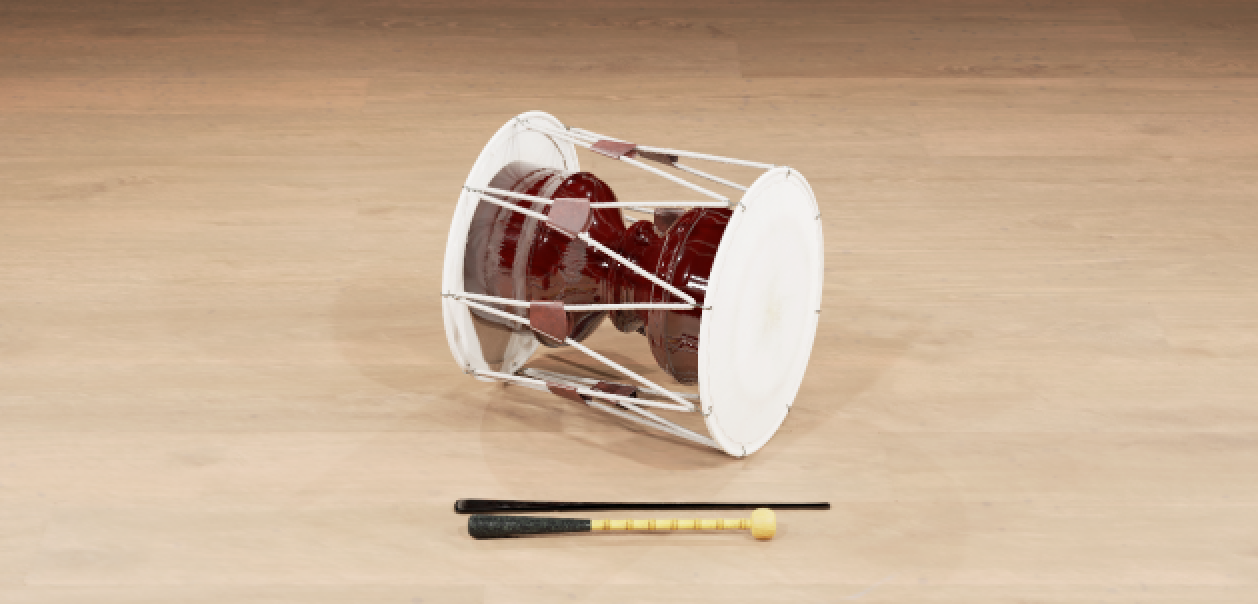
Samul Janggu
Janggu (Sanjo)
The Janggu is an hourglass-shaped drum with two heads made from animal skin. They can be played on the floor, or carried with a strap on the shoulder while dancing. The tube that connects the left and right sides determines the tone. A wider tube will sound deep and husky while a narrow one will sound hard and snappy. The Sanjo Janggu has a very rich sound, while the smaller Samul Janggu produces a louder sound.
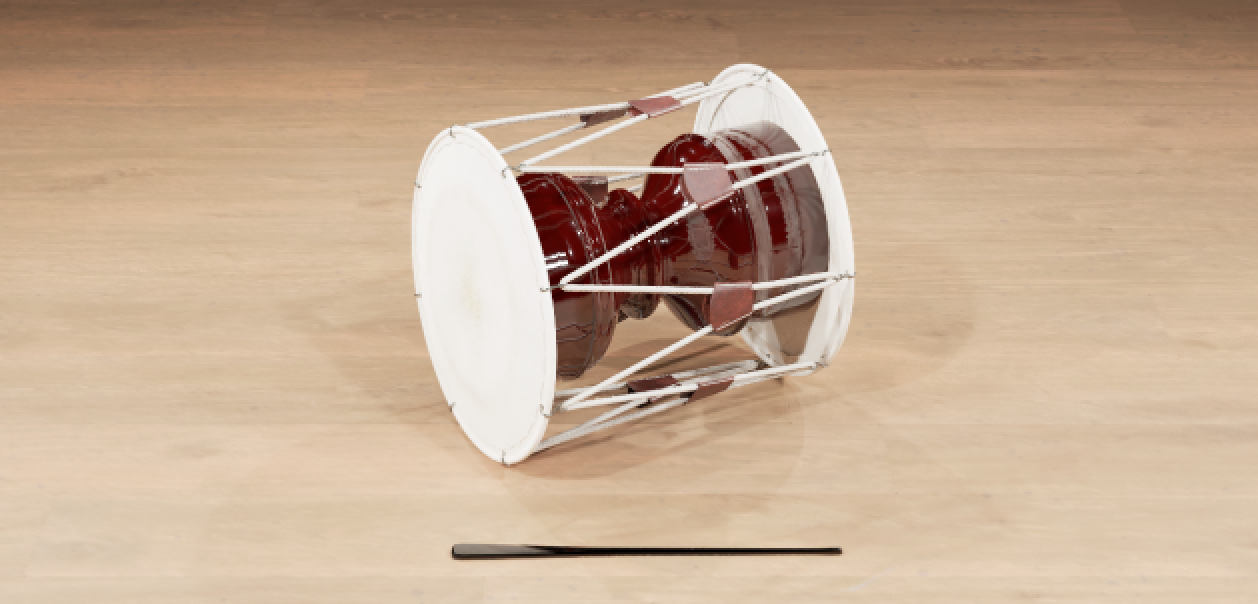
Sanjo Janggu
Jing
The Jing is a large gong, which is often used to delineate the overall rhythm in traditional Korean music. Usually hung on a wooden frame, the Jing is made from high-quality sheet metal, and played with a thick, padded mallet. The Jing is associated with the sound and feeling of wind, and when played should resonate as long as possible to “embrace" the sound of the other instruments.
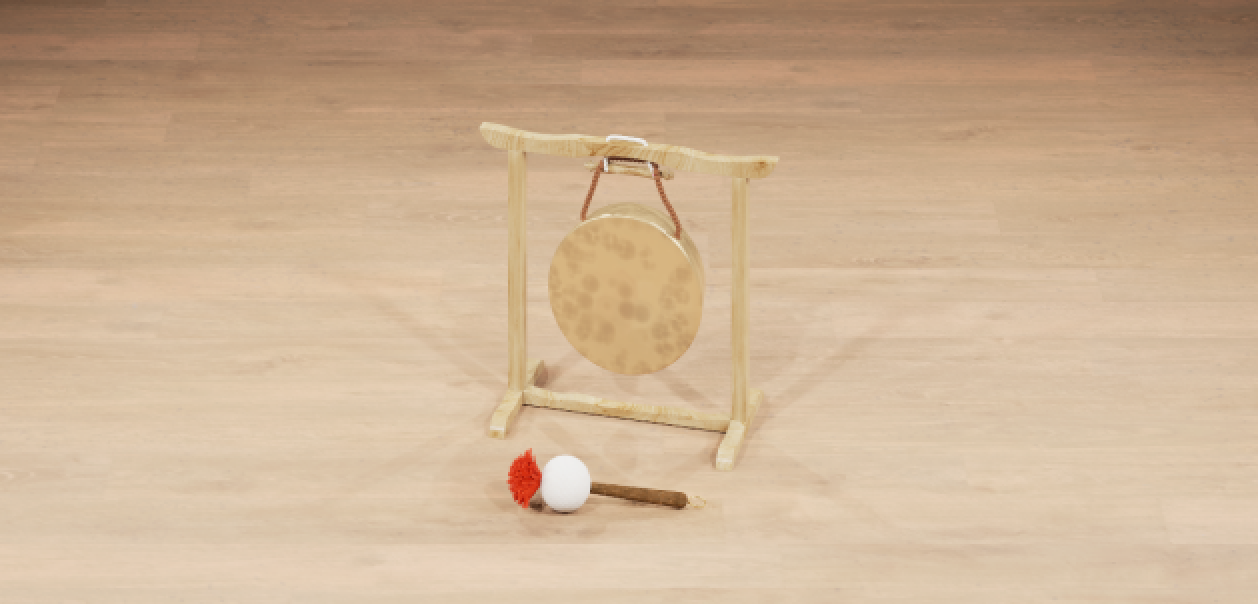
The Jing
Kkwaenggwari
The Kkwaenggwari is a small, dish-like gong with a high-pitched, crashing timbre. The right hand strikes the Kkwaenggwari in different spots to bring out a range of sounds and resonances. The left hand holds the instrument with thumb and index finger, and the remaining three fingers mute and dampen the ringing of the metal, similar to a hi-hat. This playing technique can produce amazing colors and rhythms.
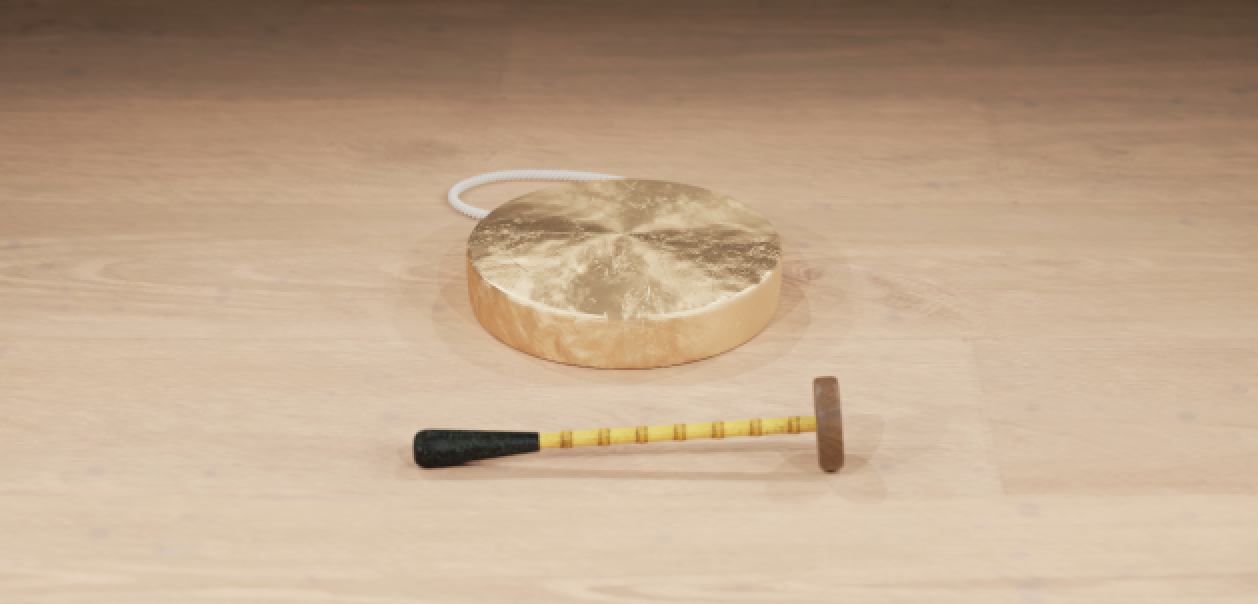
The Kkwaenggwari
Sogo
The Sogo is a small and light drum with two membranes made from animal skin on the two sides of a thin wooden body. A short wooden handle is attached to the drum body, which is held with the right hand. The left hand plays the Sogo with a short wooden stick either on the membrane or the wood of the shell. The Sogo produces a gentle sound and often functions as a prop for choreographed dances.
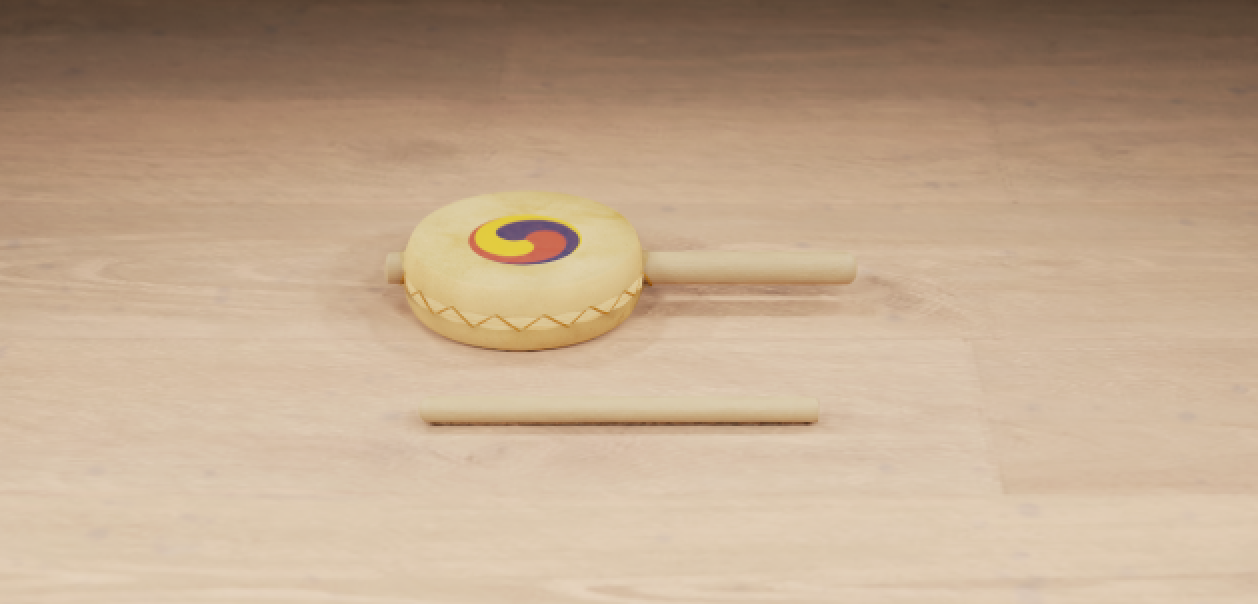
The Sogo